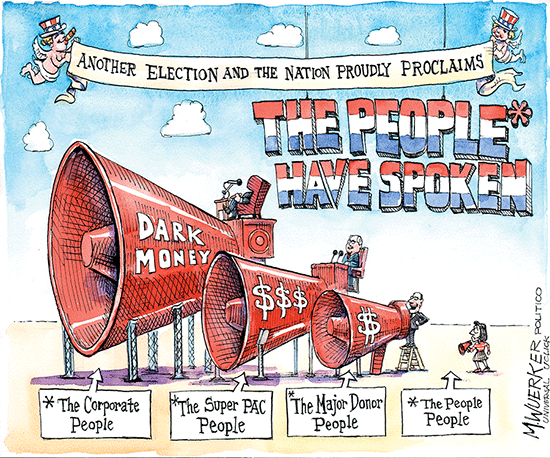What Retirees Need to Know about the New Federal Pension Rules
Mark Miller / Reuters
Dec. 18, 2014
Only a small percentage of retirees are directly affected by the new rule.
But future legislation may lead to more pension cutbacks.
The last-minute deal to allow retiree pension benefit cuts as part of the federal spending bill for 2015 passed by Congress last week has set off shock waves in the U.S. retirement
Buried in the $1.1 trillion “Cromnibus” legislation signed this week by President Barack Obama was a provision that aims to head off a looming implosion of multiemployer pension plans—traditional defined benefit plans jointly funded by groups of employers. The pension reforms affect only retirees in struggling multiemployer pension plans, but any retiree living on a defined benefit pension could rightly wonder: Am I next
“Even people who aren’t impacted directly by this would have to ask themselves: If they’re doing that, what’s to stop them from doing it to me?” says Jeff Snyder, vice president of Cammack Retirement Group, a consulting and investment advisory firm that works with retirement plans.
The answer: plenty. Private sector pensions are governed by the Employee Retirement Income Security Act (ERISA), which prevents cuts for retirees in most cases. The new legislation doesn’t affect private sector workers in single-employer plans. Workers and retirees in public sector pension plans also are not affected by the law.
Here are answers to some of the key questions workers and retirees should be asking in the legislation’s wake.
Q: Cutting benefits for people who already are retired seems unfair. Why was this done?
A: Proponents argue it was better to preserve some pension benefit for workers in the most troubled plans rather than letting plans collapse. The multiemployer plans are backstopped by the Pension Benefit Guaranty Corp (PBGC), the federally sponsored agency that insures private sector pensions. The multiemployer fund was on track to run out of money within 10 years—a date that could be hastened if healthy companies withdraw from their plans. If the multiemployer backup system had been allowed to collapse, pensioners would have been left with no benefit.
Opponents, including AARP and the Pension Rights Center, argued that cutting benefits for current retirees was draconian and established a bad precedent.
Q: Who will be affected by the new law? If I have a traditional pension, should I worry?
A: Only pensioners in multiemployer plans are at risk, and even there, the risk is limited to retirees in “red zone” plans—those that are severely underfunded. Of the 10 million participants in multiemployer plans, perhaps 1 million will see some cuts. The new law also prohibits any cuts for beneficiaries over age 80, or who receive a disability pension.
Q: What will be the size of the cuts?
A: That is up to plan trustees. However, the maximum cuts permitted under the law are dramatic. Many retirees in these troubled plans were well-paid union workers who receive substantial pension benefits. For a retiree with 25 years of service and a $25,000 annual benefit, the maximum annual cut permitted under the law is $13,200, according to a cutback calculator at the Pension Rights Center’s website.
The cuts must be approved by a majority of all the active and retired workers in a plan (not just a majority of those who vote).
Q: How do I determine if I’m at risk?
A: Plan sponsors are required to send out an annual funding notice indicating the funding status of your program. Plans in the red zone must send workers a “critical status alert.” If you’re in doubt, Snyder suggests, “just call your retirement plan administrator,” Snyder says. “Simply ask, if you have cause for concern. Is your plan underfunded?”
The U.S. Department of Labor’s website maintains a list of plans on the critical list.
Q: How quickly would the cuts be made?
A: If a plan’s trustees decide to make cuts, a notice would be sent to workers. Snyder says implementation would take at least six months, and might require “a year or more.”
Q: Am I safe if I am in a single employer pension plan?
A: When the PBGC takes over a private sector single employer plan, about 85% of beneficiaries receive the full amount of their promised benefit. The maximum benefit paid by PBGC this year is $59,320.
Q: Does this law make it more likely that we’ll see efforts to cut other retiree benefits?
A: That will depend on the political climate in Washington, and in statehouses across the country. In a previous column I argued that the midterm elections results boost the odds of attacks on public sector pensions, Social Security and Medicare.
Sadly, the Cromnibus deal should serve as a warning that full pension benefits aren’t a sure thing anymore. So having a Plan B makes sense. “If you have a defined benefit pension, great,” Snyder says. “But you should still be putting money away to make sure you have something to rely on in the future.”
Tag Archives: UPS
Hope for the New Year
A Union Benefit
We the People………..
Workers need to stand up
No Fun
They Remember Some of the Things Jim Casey Taught, and Forgot About Others
UPS double standard
UPS fires the driver in a case like this because their internal investigation finds him responsible for the accident. But when a jury award is involved, they deny responsibility. Can you have it both ways? DB
MOBILE, Alabama — A Mobile County jury granted a man a $1 million award for damages after a car accident with a UPS delivery truck two years ago.
Gerald Simoneau II was driving on Rangeline Road when a UPS truck driven by Steven A. Chestnut veered onto the street, colliding with the vehicle he was driving, according to a complaint filed in Mobile County Circuit Court.
After the February 28 crash, Simoneau, underwent multiple surgeries to repair broken bones, including his ribs and clavicle; and permanent injuries to one of his arms. A jury awarded Simoneau compensatory damages for the incident Thursday.
“UPS’s driver chose not to follow basic safety rules. By violating the right-of-way, he caused a collision that permanently injured another person,” said Lucy Tufts, an attorney for Cunningham Bounds who represented Simoneau, the plaintiff.
Chestnut, who was then employed by UPS, attempted to cross the intersection near Todd Acres Road and pulled in front of Simoneau only seconds before they both collided.
“UPS is disappointed with the jury’s verdict and we are evaluating whether we are going to appeal,” said Susan Rosenberg, a spokesperson at the corporate office in Atlanta. “Because it’s so recent our lawyers need time to study the elements of the verdict.”
The shipping and logistics company has 30 days to file a motion for an appeal. That motion can sit before a judge as long as 90 days.
“Even after its driver admitted fault, UPS was not willing to accept responsibility. UPS spent 2 ½ years litigating the case and wanted the jury to believe that Mr. Simoneau was to blame for not seeing and avoiding its delivery truck,” Tufts said.
“The jury’s verdict sent a message that it is important for corporations like UPS to be accountable and to take responsibility for their actions when they cause harm to someone else.”
Southern California UPS driver arrested on gun trafficking charges
A Southern California driver for United Parcel Service was arrested Friday, accused of stealing dozens of guns bound for a Turner’s Outdoorsman store in Rancho Cucamonga.
Curtis Hays, 36, allegedly funneled 72 weapons, including 12-gauge shotguns and .45-caliber pistols, to an associate for sale on the region’s bustling black market for illegal firearms.
“This is an unusual case,” said Carlo A. DiCesare, a special assistant U.S. Attorney in Riverside who is prosecuting the case. “It was a large number of firearms that were stolen, and they were stolen from a reputable shipping company.”
Authorities learned of the scheme after Turner’s Outdoorsman management alerted authorities to the missing shipments. The store typically receives UPS shipments from out-of-state gun manufacturers through the shipping company’s Ontario hub, according to authorities.
The 16-count indictment was filed July 23. It alleges Hays, of Rancho Cucamonga, stole a series of packages containing guns in 2012. The indictment also accuses him of stealing jewelry and mobile phones that were supposed to be delivered to other retailers.
Prosecutors have named Dennis Dell White, Jr., 35, of Moreno Valley, as Hays’ co-conspirator and middleman who is accused of selling the guns on the street or to other illegal gun dealers.
“Defendants Hays and White would meet in Rancho Cucamonga, California, at which defendant Hays would give the stolen firearms or other goods to defendant White,” according to the indictment. Authorities say Hays no longer works for UPS.
“Certainly there is a huge market out there,” DiCesare said of illegal gun sales in Southern California. “What the full extent of it is – I don’t know if anyone knows.”
Hays and White are charged with conspiracy, six counts of theft of firearms, six counts of receipt and possession of stolen firearms and two counts of theft, receipt, and possession of goods in interstate commerce.
The indictment mentions two anonymous individuals involved in the deals as P.C. and L.C. They remain uncharged, according DiCesare.





